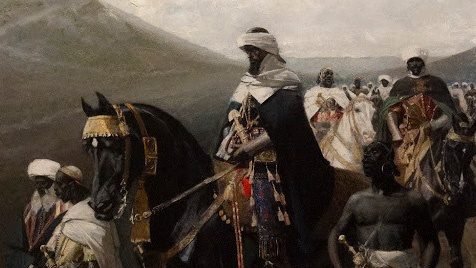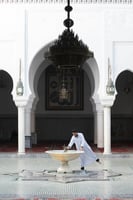In the inaugural episode of The Timeless Podcast, we journey into the heart of medieval Morocco,...
Walking with Ibn Arabi: Tracing the Invisible in the Streets of Fez

To walk through Fez is to walk through centuries of spiritual longing. The city does not simply contain history—it speaks it, breathes it, repeats it in its patterned tiles and narrow alleys. For those attuned to the metaphysical, Fez is not just a city but a text. And few have read this text more profoundly than Ibn Arabi, the Andalusian mystic, philosopher, and poet who once wandered these very streets.
The Pathless Path: Ibn Arabi’s Presence in Fez
While his physical traces in Fez are faint—reduced to contested memories and partially documented retreats—his presence is atmospheric. One does not follow Ibn Arabi in Fez by looking for monuments, but by walking with his questions: What does it mean to see God in all things? How do we dwell in multiplicity without forsaking unity?
Ibn Arabi’s metaphysical concept of wahdat al-wujūd (the unity of being) resonates particularly well with the way Fez layers its material and spiritual realities. A single alley may lead from a marketplace to a madrasa to a zawiya, blurring the boundaries between trade, knowledge, and devotion. The city’s form becomes a metaphor for the One in the many.
Fez as Mirror
The mystic’s journey is not forward but inward. In Fez, every encounter—whether with a stone, a silence, or a stranger—can be a threshold. Ibn Arabi invites us to regard these encounters not as distractions but as mirrors, reflecting back the Real (al-Haqq).
In this city, to walk slowly is to let the unseen catch up. The uneven rhythm of the medina, its sudden bursts of color and corners of shadow, stages the kind of paradox Ibn Arabi loved: that the Real is both manifest and hidden, that the path is both open and secret.
The Retreat Within the Retreat
For participants in Wissal 2025, the city becomes a living meditation. Our reflective walk into the Atlas Mountains is not a pause from the retreat but a continuation—an echo of Ibn Arabi’s own solitary sojourns. In these quiet landscapes, stripped of architecture but full of sky, the vertical becomes visible.
This is not a pilgrimage in search of sites. It is a pilgrimage in search of seeing—a practice of walking not toward meaning but with it.



